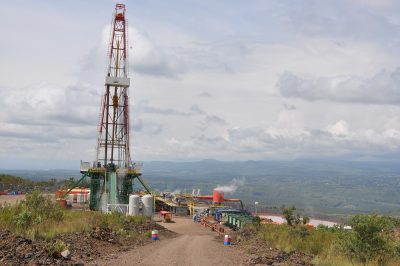DOE acquires Ormat test plant that utilizes geothermal from old oil field
A geothermal plant that adds electricity production to the output of an old oil field 35 miles north of Casper in Wyoming has been sold to the U.S. Department of Energy for an undisclosed amount by Ormat Technolgies.
Reported locally, “A geothermal plant that adds electricity production to the output of an old oil field 35 miles north of Casper has been sold to the U.S. Department of Energy for an undisclosed amount.
Ormat Technologies, of Reno, Nev., built the plant at the Teapot Dome field to prove the technical feasibility of using hot water associated with oil production to generate electricity.
The plant was designed to produce 250 kilowatts of electricity, according to the Department of Energy. It has been operating for more than a year.
“We’re taken a huge step by proving the technology works,” said Paul Thomsen, Ormat’s director for policy and business development.
“The bigger question is, are there other sites like this throughout the country that we could implement this type of project? We are still doing the market analysis on that.”
Thomsen said feasibility will be determined on a site-by-site basis. Certain operating costs avoided at the Rocky Mountain Oilfield Testing Center would be encountered at other sites.
For example, production water is ultimately discharged into a creek at the RMOTC site, but it may have to be reinjected at other sites.
Jim Nations, public relations program manager for RMOTC, said the water being extracted at the Teapot Dome field is consistently 190 degrees. The Ormat unit is designed to function with water temperatures as low as 170 degrees.
With a payoff scenario of about four years, Nations said the generation cost per kilowatt hour is 5.5 to 6 cents.
According to the U.S. Energy Information Administration, the average retail price of electricity in Wyoming is 5.29 cents, which ranks lowest in the United States.
Nations said the Ormat process holds promise for older oil fields. Because there is less reservoir pressure in such fields, more electricity is required for pumps and motors to extract the remaining oil.
At this point, it is not possible to say to what extent the Ormat plant will offset power consumption at Teapot Dome.
“Because this is a test to evaluate the overall operation, we’ve done hardware modifications and also had some water volume issues,” Nations said. “It is in an operating oil field, and we’re learning as we go.”
The federal government plans to continue the Ormat test started a year ago for another two years and to collect more information related to long-term durability of the unit and also to acquire additional operational knowledge of the plant.
Acquisition of the Ormat unit is part of a collaboration between DOE’s offices of Fossil Energy and Energy Efficiency and Renewable Energy.”
Source: Billings Gazette











